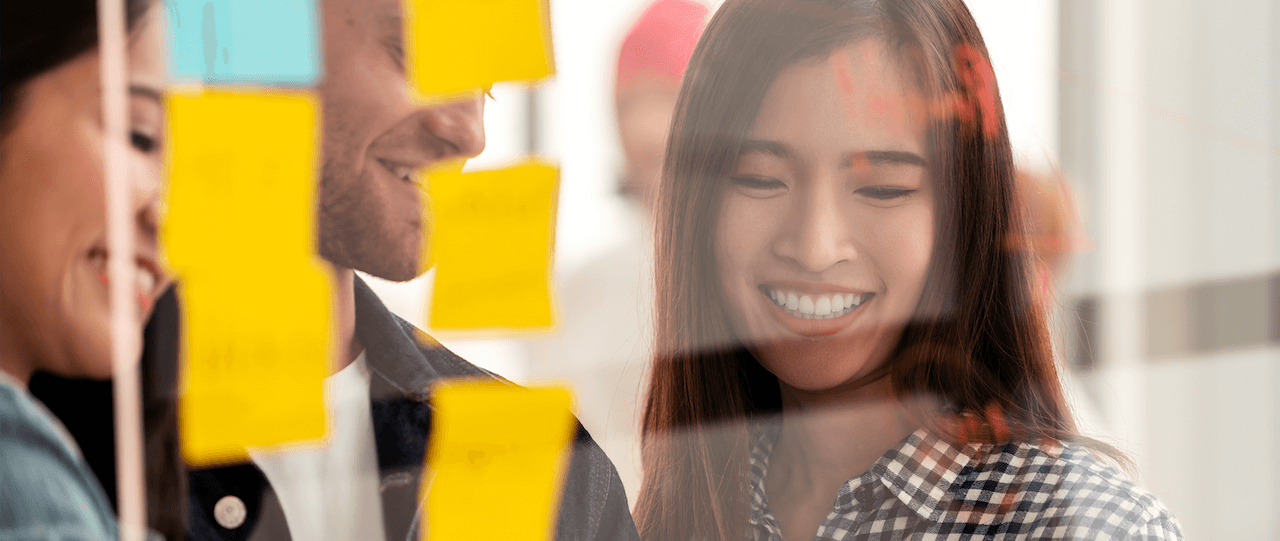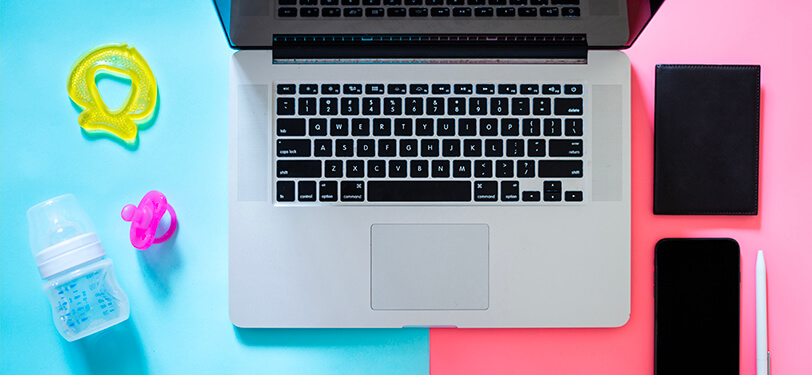Many companies suffer from a bad case of ‘meeting-itis’: the highly contagious sickness with major symptoms including a large number of meetings during which work can stagnate and few decisions are made.
And what’s more, according to a recent study, an enormous 73% of participants admit to working on something else while attending meetings.
In this article, we discuss how design thinking can change the way we approach meetings, boosting productivity, creativity and problem solving.
What is ‘design thinking’?
Design thinking is a way of approaching meetings that enables complex problem solving to be achieved in a more efficient manner by placing the focus on the end users and their needs. It’s a collaborative, creative process that works in three main phases:
Inspiration
Ideation
Implementation
The key ingredients of design thinking to apply to meetings are: empathizing with attendees to ensure their needs are being met; using the right tools so ideas can be ‘brought to life’ and visualized during the meeting; having a wide range of skill sets to approach the problem from different angles; the realization of ideas through mockups or prototypes.
Let’s look closer at how these main principles can help to boost the productivity of a meeting and how they should be integrated into the three key steps in the design thinking process.
How ‘design thinking’ improves meetings
Using design thinking as the basis of your meeting can help to make it:
- more productive, so results are better developed and more relevant
- more efficient meaning a better use of time
- more inclusive so all participants are active in the meeting
Participant boredom in meetings is often the result of ‘presenteeism’. This is when employees are obliged to be in meetings in order to simply share information with one another. It can be considered an effective way to communicate, especially in large organizations.
Fortunately, however, there are other ways to share this information more efficiently,‘freeing up’ time spent in meetings to be dedicated to what should remain their main objective: creative problem solving. Now participants can concentrate on using their collective intelligence to come up with ideas and make real decisions that have a tangible result.
Make your meeting a design thinking workshop
In the design industry, meetings are called workshops. In regular meetings, usually there is an agenda and people take it in turns to make a presentation, whereas in a workshop there is a process that uses creative tools. These aren’t just semantic differences. The way in which we approach the meeting itself is the difference that design thinking offers.
Participants’ presence in a workshop is essential to its progress with everyone adding something to the process. Work is done using the head and the hands, the heart and the body. Models are made, prototypes are constructed. Participants approach the workshop with a mindset that’s open to change:
- Values : positive and professional
- Mindset: humble and empathetic
- Production: participative and visual
To turn a classic meeting into a collaborative workshop, the entire format must change:
- Setting: A relaxed space with walls that don’t ‘close in’ on the participants, rather than a small room with a central table. Think: an artist’s workshop with natural light and plants, white walls, sofas, comfortable chairs and tables equipped with paper to sketch on.
- Movement: Get the body active by changing between seating and standing, rather than just sitting the whole time. How: have a opening discussion while sitting comfortably on sofas, then brainstorming in smaller groups around tables before presenting in front group.
- Tools: Use shared creative canvases for participants to use collectively rather than each person having an individual screen. Example: Making a project roadmap: start with a blank plan of action, and ask participants to fill in the various stages with what they will do as well as suggesting deadlines. Note down on Post-its and stick them somewhere visible for all to see.
How do you set up a workshop?
How you plan and execute a workshop is crucial to its success. It should be collaborative during each of its different stages:
Before
Preparation: Share the goal of the workshop with everyone so participants all have time to think about the subject beforehand.
During
- Wake up: get the body and mind active with interactive activities.
- Framing: discuss collective and individual goals.
- Immersion: exchange information and define common issues.
- Conceptualization: share ideas and choose a concept.
- Implementation: visualize a solution and create a plan of action.
- Next Steps : assign tasks to each participant with due dates.
After
- Feedback: At the end of the meeting, send a message to participants containing diagrams, notes and sketches.
Why use Design Thinking?
Using this method, your team get to have input in decision making which can enable them to feel more valued and confident in their work. Encouraging collective creativity can stimulate ideas and innovation. A shared plan of action helps everyone to feel involved once the project gets underway.
Take a moment to think about the next meeting that you’ll be organizing or are participating in. Imagine that you are a designer and you’re inviting the participants into your workshop. They’ll leave feeling energized and motivated, ready to reach for the objectives you’ve all set for your project!
About the Author

Yoann Rouillac is a strategic designer at operational strategy consulting firm Tenzing Conseil. He uses the tools and methods from the design industry to tackle strategic challenges faced by his clients.
If working creatively as a designer perks your interest, take a look the OpenClassrooms UX Designer program.










